
When you think of wine produced in the south of France, your mind may quickly take you to the picturesque landscapes of Provence and the Mistral wind-blown vineyards of the Rhone. However, not far from both, the Mediterranean and Atlantic-influenced region of the Languedoc has been producing wine for centuries. Spanning from the Mediterranean Sea coastline from the border of France with Spain, separated by the Pyrenees, across to the region of Provence, Languedoc-Roussillon is the largest wine growing region of France. Originally, vineyards were introduced by the Greeks along with fragrant olive oil, but it was really developed, much like Provence, by the Romans. I had a chance to visit the Languedoc region not long ago, traveling as a guest of the joint trade Council of the wines of Languedoc.
Though vineyards and wine production have been in the region for thousands of years, Languedoc hasn’t always been known as a stellar wine producer in France. There are several causes of this. The area was severely destroyed by the spread of phylloxera in the mid-19th Century, destroying much of the quality vineyard land. When the cure was discovered in grafting French vines onto American root stock they found that the limestone soils of the region and the American rootstock weren’t compatible with the traditional quality varieties of the region. Instead, they found solid workhorse varieties, like Carignan and Alicante Bouschet, could adapt well but were of a lower quality.
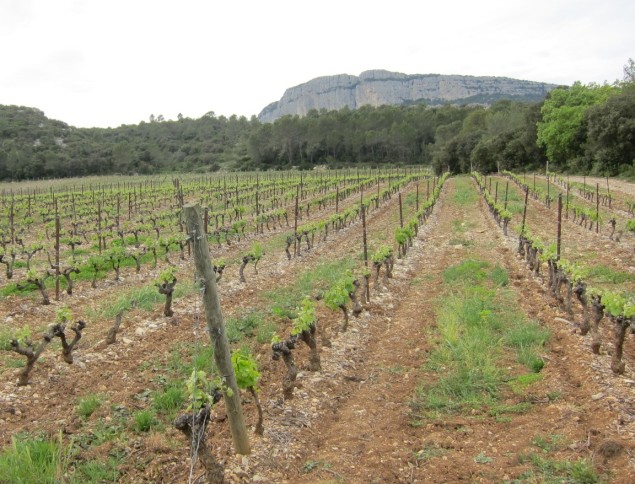
The region supplied much of the wine rations to the French army in WWI and WWII, which was a considerable amount. When the demand for inexpensive wines grew in years following WWII, large production became the focus for the region with an eye on quantity instead of quality. The historically working class society became focused on growing large quantities of grapes, often sold off to cooperatives or to be sold as bulk wine to a négociant, or wine merchant who assembles the produce of smaller growers and winemakers and sells the result under its own name. There was also a shift to growing popular international varieties instead of traditional varieties well suited for the soils and climate of Languedoc, quite similar to those of the Rhone.
In the 1980’s and 1990’s this stared to change with a wave of new producers celebrating the historic varieties of the region, like approachable old vine Grenache, meaty, ripe berry filled Mourvedre, smoky, spicy Syrah, smooth Cinsault and earthy, old vine Carignan that shines with years of development and vine age, developing into a robust, hearty yet refined, wine with concentration and distinct character. Though much of the old vines had been removed over years of bulk production, key wineries throughout the region have been able to acquire vineyard plots with classic vines, resurrecting them to produce highly concentrated, high quality wines from vines dating back 50, 70, even 100+ years.
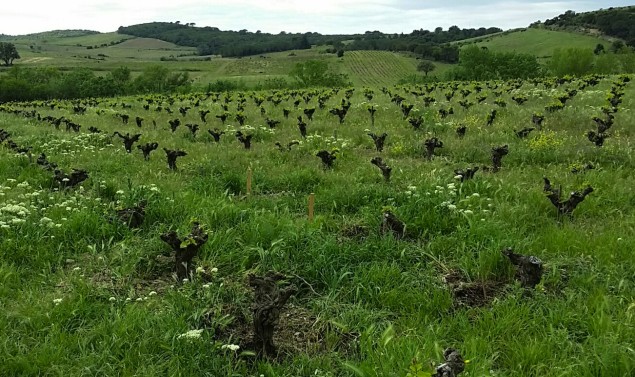
When treated with care and respect, the resulting wine from these old vines is rich and full bodied, but also soft, supple and elegant. Ripeness has never been a problem in the region, as the hot Mediterranean Sea influenced days extend their arms around ripening vines to ensure the fruit is juicy and ripe by harvest. Acidity and freshness have been a problem for some, as temperatures aren’t cooled enough in the evening to maintain acidity, specifically for the white wines. But southern winds from the Sea, as well as northern winds coming in from the Atlantic, and westward winds sweeping in from the Rhone, assist with helping cool the evening temperatures assisting in keeping acidity and freshness in the fruit, especially with classic Rhone whites that prefer warm, long growing seasons like Rolle, Grenache Blanc and Viognier.
As the resurrecting of old vines and vineyards began, a focus also came from young, innovative winemakers to farm their vines in a clean, sustainable way. Thanks to the favorable, very dry climates, a constant breeze coming in from every direction, well draining limestone filled soils, and relatively low humidity, vines can thrive without the use of a lot of chemicals and processed fertilizers, allowing vines to thrive with organic, biodynamic or simply “natural” farming.
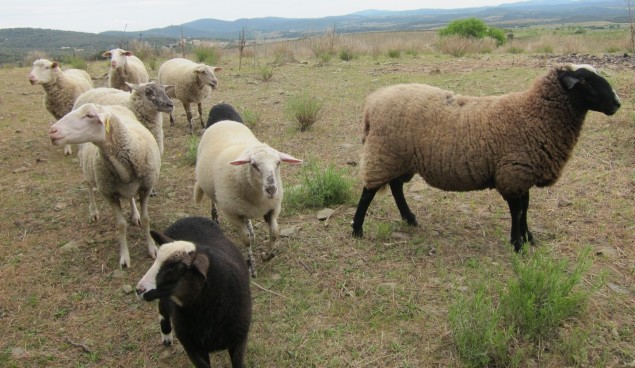
To be an AOC (or appellation d’origine contrôlée, translating to “controlled designation of origin,”) wine for the Languedoc the grapes must come from a precise geographic area, vineyard management must meet strict specifications, and the wine must contain a minimum of two grape varieties, in proportions laid down in the specifications. This includes red, white and rosé wines, as well as the sparkling wines of Limoux and sweet wines found throughout the region. There are also a large number of wines designated under a Vin de Table or Vin de Pays d’Oc or table wine/country wine designation (about 60% of the Vin de Pays in France comes from Languedoc-Roussillon.) Varieties are always blended to compliment each other while creating texture, complexity and balance.
Red and rosé have blending standards of at least 50% black Grenache, Syrah and Mourvèdre blended with Cinsault and black Carignan. White wines include a blend of at least 70% white Grenache, white Clairette, Bourboulenc, White Picpoul, Roussanne, Marsanne, Rolle and Tourbat, blended with white Carignan, white Terret, Ugni Blanc, Maccabeu and 10% maximum Viognier.

Though there are a plethora of other varieties grown throughout the Languedoc, these are typically not produced as AOC wines. Created from vineyards that are essentially a ‘patchwork’ of different varieties, (often growing right next to each other, quite similar to the Douro in Portugal,) the field blend creates balance and complexity. This style a key component of wines of today in the Languedoc, giving a nod and thank you to the previous generations of vignerons.
As various producers gain recognition and respect, individual AOC designations are becoming more understood, like the Carignan based wines in Corbières or the schist filled soils producing aromatic, mineral intense wines of Faugères. However, most will include the Coteaux du Languedoc, or simply Languedoc AOC designation.

A distinguishing element of the wines of the Languedoc is the influence of the wild aromatic “garrigue,” or the olive trees, soft and woody herbs, wild flowers, shrubland and other flora that grow naturally throughout the South of France. Old vines, enhanced with this garrigue create rich and textured wines filled not only with ripe and dried fruit, but are also intensely aromatic with earthiness, texture, richness and character. Though the native varieties could be overpowering and dense, the use of stainless steel or large foudres (very large oak casks) for fermentation and aging keeps wines fresh, and the use of modern winemaking tools, like carbonic maceration, softens rough tannins, producing approachable wines.
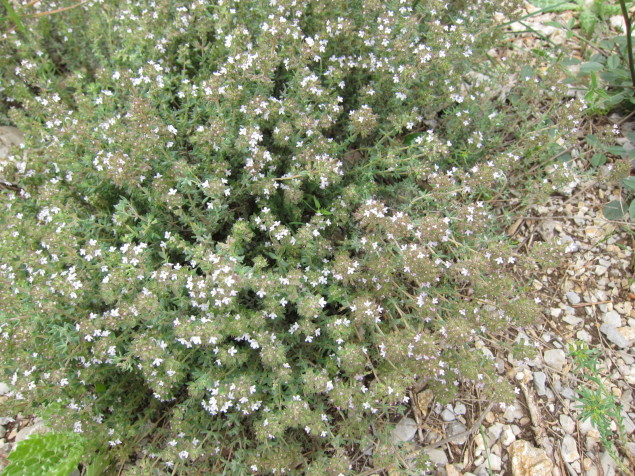
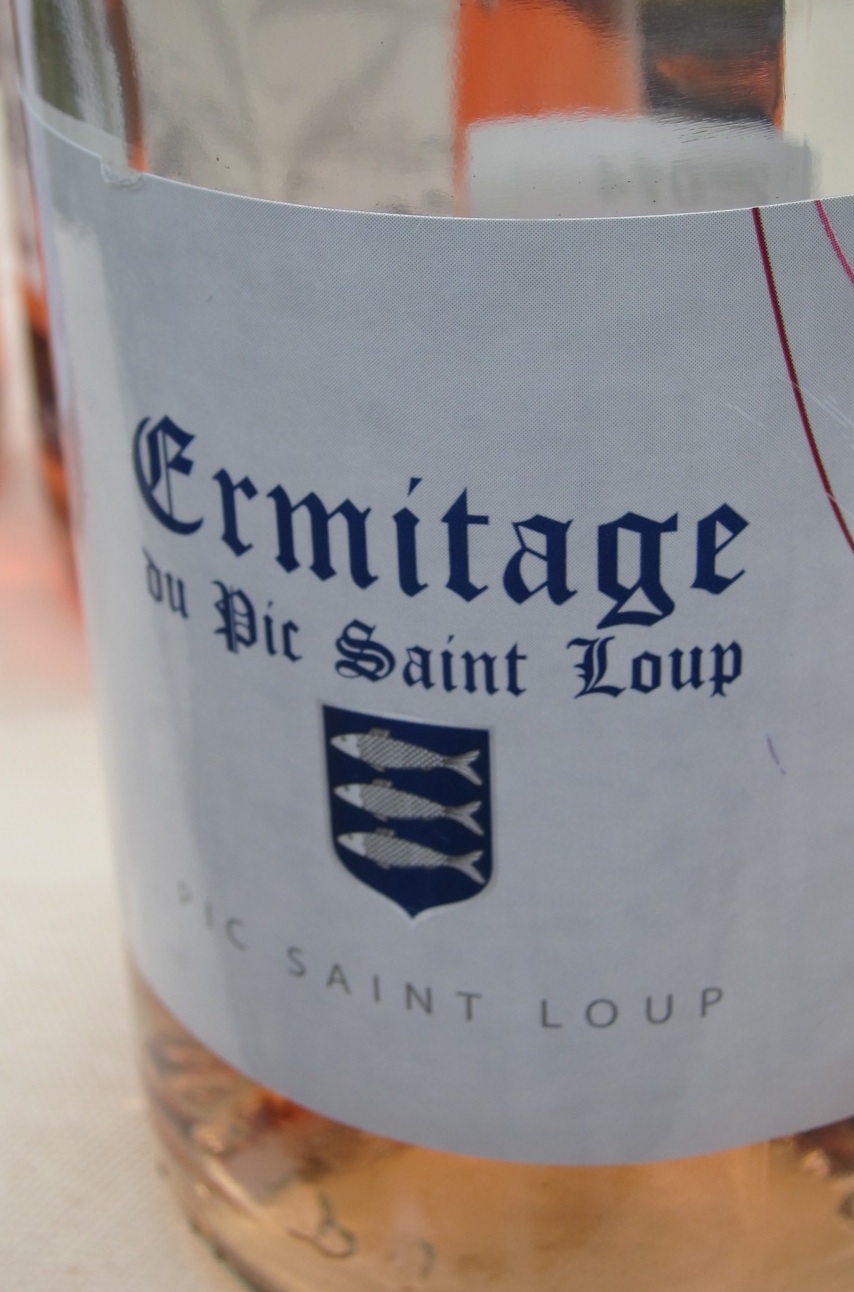 Languedoc Rosé is juicy, fresh and vibrant, often made in the sanguine method of bleeding the grapes before pressing g to produce the red wines to get just the right amount of color and flavor for the rose. The vines are alone typically younger, producing easier, less complex wines than the heartier old vines produce. The color is the first key to the flavors inside. Much deeper than their friends to the east in Provence produce, celebrating the true richness and color of the hearty Syrah, Cinsault, Mourvedre and Carignan fruit. Chateau de Lascaux Rosé Coteaux du Languedoc ($17) available here; Château Fontanès Pic St-Loup Rosé ($15) at Sigel’s and Domaine de Fonsainte Corbieres Gris de Gris Rosé ($19) at Pogo’s, and Ermitage du Pic Saint Loup Rosé ($15) available here, are each lively, fresh and delicious Rosé blends from the region that highlight the natural floral, herbal and savory olive and ripe fruit notes that permeate the region.
Languedoc Rosé is juicy, fresh and vibrant, often made in the sanguine method of bleeding the grapes before pressing g to produce the red wines to get just the right amount of color and flavor for the rose. The vines are alone typically younger, producing easier, less complex wines than the heartier old vines produce. The color is the first key to the flavors inside. Much deeper than their friends to the east in Provence produce, celebrating the true richness and color of the hearty Syrah, Cinsault, Mourvedre and Carignan fruit. Chateau de Lascaux Rosé Coteaux du Languedoc ($17) available here; Château Fontanès Pic St-Loup Rosé ($15) at Sigel’s and Domaine de Fonsainte Corbieres Gris de Gris Rosé ($19) at Pogo’s, and Ermitage du Pic Saint Loup Rosé ($15) available here, are each lively, fresh and delicious Rosé blends from the region that highlight the natural floral, herbal and savory olive and ripe fruit notes that permeate the region.
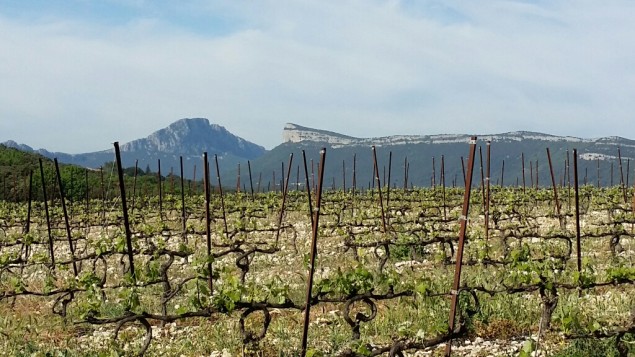
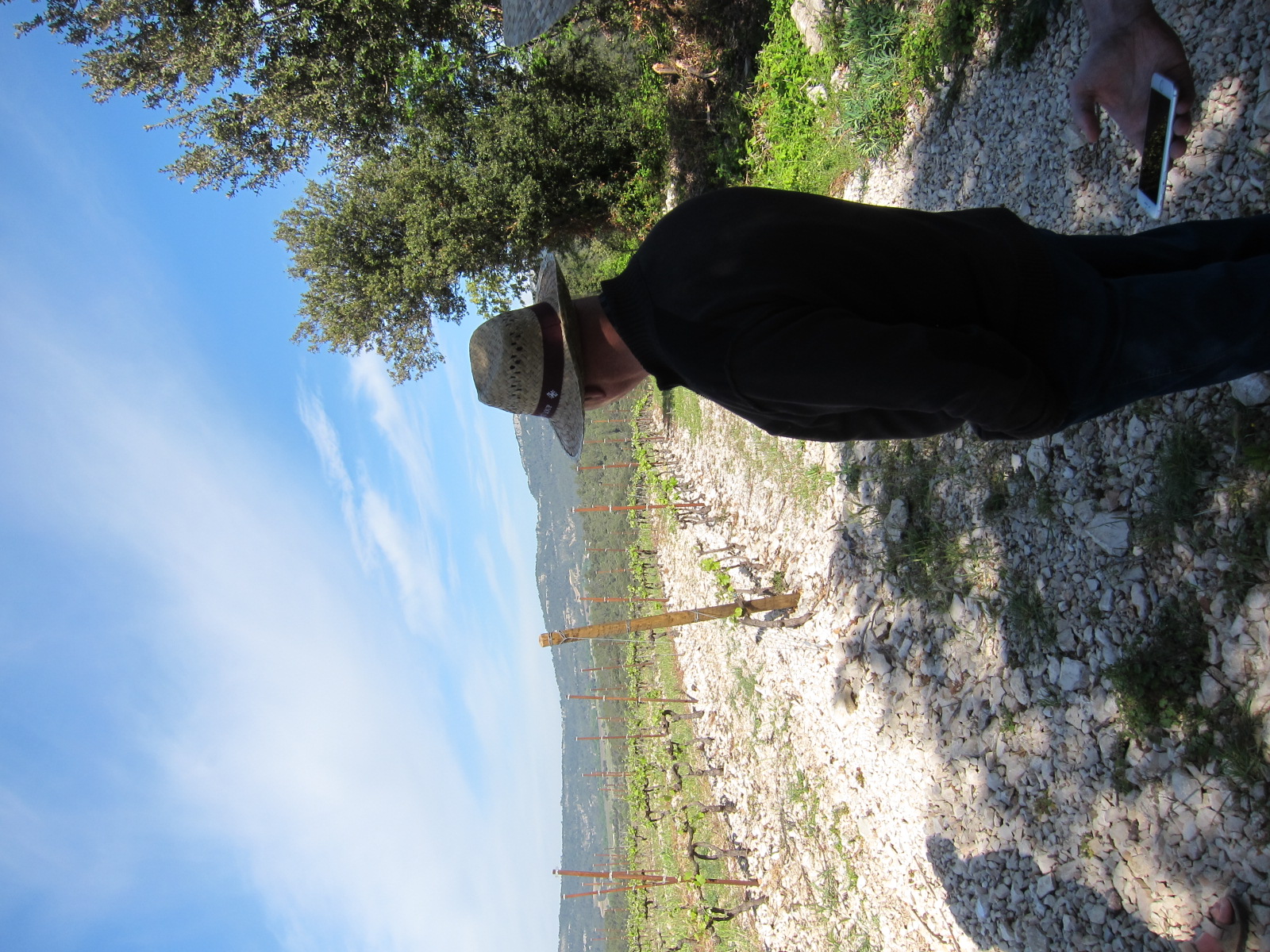
White wines can struggle to maintain their freshness and acidity with the high temperatures found throughout the region, which makes finding a truly delicious one that much more special. Chateau de Lancyre in Pic Saint-Loup proved how special their limestone filled soils at high elevations are for producing a simply stellar Chateau de Lancyre Roussanne.
Located 15 miles inland from the Mediterranean, at elevations of 2000 feet above sea level, the vines of Chateau de Lancyre grow in soils that have a history of grape growing and wine production dating back to the 1500’s, the winery is one of the best in the region. Though their production is based mostly on red wines, this special white proved to be one of the freshest, lightest and most interesting whites of the trip, outside of the beloved Piquepoul grown near the Sea.
 Thanks to their high vineyard elevation at the base of the Pic Saint-Loup mountain, summer temperatures are blazing hot (upwards of 100 degrees during the day,) but temperatures fall dramatically at night, ensuring bright acidity and freshness can be maintained. By blending their toasted spice and pepper filled Roussanne with a touch of honey and nut filled Marsanne and stone fruit filled Viognier a truly elegant, floral and juicy citrus filled wine is created with a luscious, long finish, perfect paired with a salad of spring asparagus, with tarragon filled hollandaise and a barely set farm egg. $20 at Spec’s.
Thanks to their high vineyard elevation at the base of the Pic Saint-Loup mountain, summer temperatures are blazing hot (upwards of 100 degrees during the day,) but temperatures fall dramatically at night, ensuring bright acidity and freshness can be maintained. By blending their toasted spice and pepper filled Roussanne with a touch of honey and nut filled Marsanne and stone fruit filled Viognier a truly elegant, floral and juicy citrus filled wine is created with a luscious, long finish, perfect paired with a salad of spring asparagus, with tarragon filled hollandaise and a barely set farm egg. $20 at Spec’s.
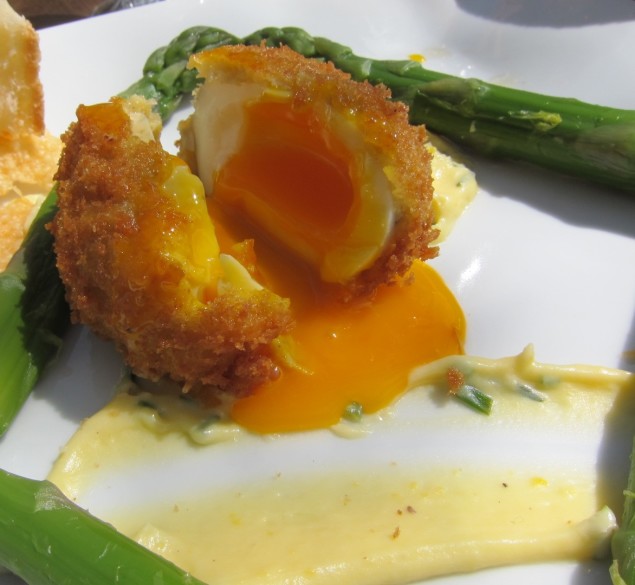

 White Picpoul (or Piquepoul,) the wine of the Picpoul de Pinet appellation near the Mediterranean Sea, produces fresh, lively, very dry and citrus filled white wines. Production for white wines within Languedoc is over 75% Picpoul. The variety grew in production and quality during the reign of Napoleon III who made the fragrant wine fashionable at the time. Today, you can find this aromatic wine, that makes the perfect accompaniment to oysters and shellfish, for incredible prices, making it ideal for warm weather enjoyment. Chateau Font Mars Picpoul de Pinet retails for $13 and Hugues Beaulieu Picpoul de Pinet for $12, both available at Spec’s.
White Picpoul (or Piquepoul,) the wine of the Picpoul de Pinet appellation near the Mediterranean Sea, produces fresh, lively, very dry and citrus filled white wines. Production for white wines within Languedoc is over 75% Picpoul. The variety grew in production and quality during the reign of Napoleon III who made the fragrant wine fashionable at the time. Today, you can find this aromatic wine, that makes the perfect accompaniment to oysters and shellfish, for incredible prices, making it ideal for warm weather enjoyment. Chateau Font Mars Picpoul de Pinet retails for $13 and Hugues Beaulieu Picpoul de Pinet for $12, both available at Spec’s.

But the true story is in the red wines and the people who have come to the region, many from other, more prestigious areas of France, proving that the region is filled with quality, both in the wines and their creators. My next post will include some of my favorite red wines tasted throughout the region and the winemakers who are celebrating the tradition of the area, and focusing on crafting impressive wines with natural farming techniques.




